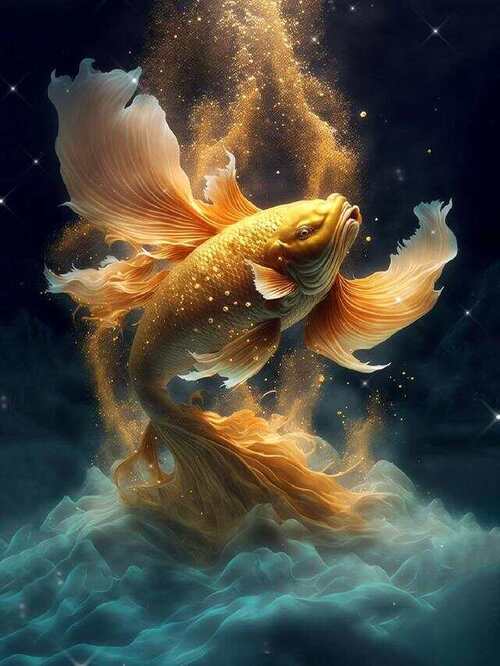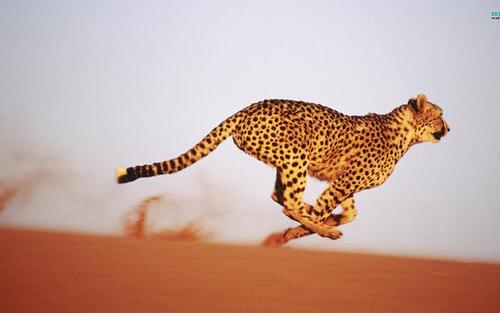In different cultures, many animals have been given the symbolism of beauty, grace and nobility. These animals not only remind people of beauty by their appearance and behavior, but also become symbols of beauty in human art, literature and mythology. This article will detail which animals are regarded as symbols of beauty and their significance in different cultures and contexts.
The peacock is undoubtedly one of the symbols of beauty in global culture, especially the huge tail feathers of the male peacock, showing brilliant colors and intricate patterns. The peacock's tail feathers can reach twice the length of its body, and the emerald green, indigo and gold feathers are dotted with eye-shaped markings, just like a gorgeous costume.
The peacock has been regarded as a symbol of beauty, nobility and self-confidence in major civilizations since ancient times. In ancient India, the peacock is a sacred creature in Hindu mythology, symbolizing beauty and immortality. The national bird of India is the peacock, which symbolizes the spirit and strength of the country. In Greek mythology, the peacock is the sacred bird of the goddess Hera, symbolizing marriage and motherhood. The peacock also symbolizes wealth, dignity and beauty in Chinese culture, especially in traditional Chinese paintings, where the peacock with its wings spread is often regarded as a symbol of auspiciousness.
In addition to its visual beauty, peacocks attract the opposite sex by spreading their wings in nature, and male peacocks impress female peacocks with their gorgeous feathers and dance. Despite this, peacocks are also easy targets for predators in the wild due to their bright colors.

The light and colorful wings of butterflies make them a beautiful symbol of nature. The colors and patterns of butterfly wings vary, some are brightly colored, and some have charming symmetry. The butterfly's metamorphosis from caterpillar to pupa, and then to beautiful adult, also makes it a symbol of life change and rebirth.
In many cultures, butterflies symbolize beauty, soul, transformation and freedom. In Japan, butterflies are seen as a symbol of happiness and longevity, especially butterflies flying in pairs symbolize marital happiness. In ancient Greece, butterflies represented the transformation and beauty of the soul. In Western Christian tradition, butterflies symbolize resurrection and rebirth, especially during Easter, when butterflies are often used to symbolize the beginning of new life.
Butterflies are not just a symbol of beauty, they are also important pollinators that help many plants thrive. Their existence not only adds beauty to nature, but also contributes to the balance of the ecosystem.

With its white feathers, slender neck and elegant swimming posture, swans have become the representatives of beauty and nobility in nature. When they glide on the lake, their posture is light and elegant, giving people a sense of otherworldly beauty. The appearance and behavior of swans are often associated with purity, grace, and beauty.
In Western culture, swans have long symbolized love, purity, and fidelity. In ancient Greek mythology, swans were associated with the goddess of beauty Aphrodite and the sun god Apollo, symbolizing beauty and holiness. In the fairy tale "Swan Lake", the swan became a symbol of eternal love. In addition, in many cultures, swans also symbolize transformation and growth, as the story of "the ugly duckling turning into a swan" is well known, symbolizing the beautiful transformation from ordinary to extraordinary.
Swans are water birds that often inhabit lakes, wetlands, and rivers. Despite their elegant appearance, swans are also strong defenders of their territory, especially during the breeding season, and will display highly defensive behavior.

Betta fish, also known as fighting fish, are famous for their rich colors and flowing fins. Their body colors vary between blue, red, purple, gold and other colors, like gems in the water. Especially male fighting fish, their long tails and fins make them look particularly elegant when swimming in the water.
Guppies are seen as a symbol of beauty and strength in Southeast Asia, especially in Thailand and Malaysia, where they are used for ornamental fighting fish competitions to showcase their beauty and their tenacious personalities. In the West, guppies are a favorite of many aquarium enthusiasts because of their colorful appearance, symbolizing family and beautiful aquatic life.
Guppies are a frequent visitor to aquariums around the world because of their bright colors and ease of breeding. During their breeding season, male fish will attract female fish by showing off their bright colors and smooth swimming postures. They are also popular for their ability to easily adapt to different environments.

Flamingos are known for their bright pink feathers and long legs, and are a symbol of beauty in the tropics. They stand gracefully in shallow water, supported on one foot, giving people a unique beauty. The color of flamingo feathers is mainly determined by the pigments in the algae and shrimp in their diet, so the pink color of flamingos has become their iconic feature.
Flamingos symbolize beauty, passion and romance in modern culture. They are often used in decorations and works of art to symbolize tropical freedom and luxury. In many cultures, flamingos are also associated with happiness and luck, especially in Latin American culture, where they represent a passionate lifestyle.
Flamingos usually live in shallow lakes and saline areas, feeding on shrimps and algae. Their unique colors not only provide them with a beautiful appearance, but also help them show health and attractiveness in groups. The beautiful feathers of flamingos make them a striking presence in nature.

Koi is a colorful freshwater fish known for its beautiful patterns and color combinations. Common koi colors include red, gold, white and black, and they give people a sense of flowing pictures when swimming in the pond. Koi is not only beautiful in appearance, but also graceful in movement. Many people consider it a symbol of beauty and peace.
Koi has important symbolic meanings in Chinese and Japanese culture. In China, koi represents good luck and success, especially in Feng Shui, where koi is often seen as a symbol of wealth. In Japanese culture, koi symbolizes perseverance and success. Legend has it that they can swim upstream, symbolizing the spirit of overcoming difficulties and perseverance.
Koi are widely distributed in water bodies in Asia, especially in artificial ponds and gardens as ornamental fish. Koi has become a favorite for garden decoration because of its gentle character and ability to adapt to the environment.

The spotted fur of leopards is one of their beautiful signs, especially for cheetahs and leopards. Leopards have black spots all over their fur, which, combined with their strong bodies, allows them to show unparalleled elegance and speed in motion.
Leopards symbolize a combination of strength and beauty in many African and Asian cultures. In Egypt, leopard skins were seen as a symbol of royalty and priests, representing dignity and beauty. In modern fashion, leopard prints are also often used to symbolize sexiness and elegance.
Leopards are top predators, known for their agility and powerful hunting skills. Their elegance combined with strength makes them one of the most beautiful predators in nature.

Symbols of beauty can be colors, shapes, behaviors, or connections to cultural backgrounds. In different cultures and societies, these animals have become representatives of beauty because of their unique appearance or symbolic meaning. Whether it is the gorgeousness of the peacock, the lightness of the butterfly, the elegance of the swan, or the strength and splendor of the leopard, they all show the beauty and magic of nature in their own way.
animal tags: Leopard Koi Flamingo Guppy Swan Butterfly
We created this article in conjunction with AI technology, then made sure it was fact-checked and edited by a Animals Top editor.